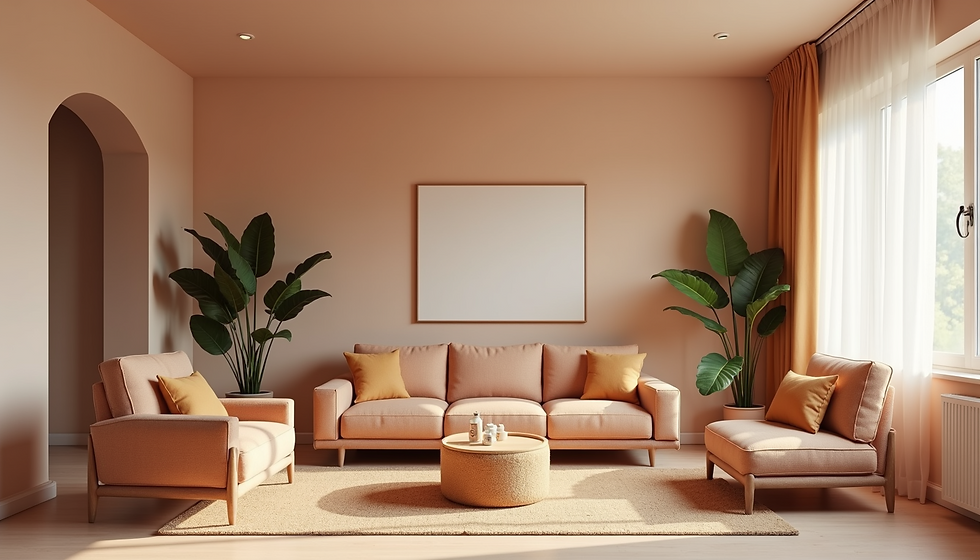CHOOSING THE RIGHT DEHUMIDIFIER
- Be-Studio

- May 25
- 3 min read
Calculating the capacity of the dehumidifier you need for your basement involves considering several factors, including the size of the space, the level of dampness, and the conditions that contribute to the humidity. Here's a step-by-step guide to help you choosing the right dehumidifier.
1. Measure the Area:
Square Metres: Measure the length and width of the basement and multiply them to get the area in square metres (m²).
Cubic Metres: For a more accurate calculation, also measure the height of the basement and multiply length × width × height to get the volume in cubic metres (m³).
2. Assess the Dampness Level:
Moderately Damp: If the basement occasionally feels damp and has a musty odour in humid weather.
Very Damp: If the space always feels damp and moist, and the odour is persistent.
Wet: If there are visible signs of moisture, like water stains, and the space feels wet.
Extremely Wet or Wet Year-Round: If there is standing water or the basement is subject to flooding.

3. Refer to Dehumidifier Capacity Charts:
Dehumidifier capacity, measured in litres of water extracted daily, is crucial for managing humidity levels. Selecting the right capacity ensures optimal performance and comfort. Manufacturer capacity charts help guide decisions based on room size and dampness level. Factors like room usage, ambient conditions, and household needs influence capacity choice. For damp areas, a higher capacity dehumidifier prevents issues like mold, while smaller units suffice for minor humidity, offering energy efficiency. Consider capacity charts to choose a dehumidifier that meets your space's specific humidity control needs.

Example Chart:
Moderately Damp:
46 m²: 4.7 litres
93 m²: 6.6 litres
139 m²: 8.5 litres
Very Damp:
46 m²: 5.7 litres
93 m²: 8 litres
139 m²: 10.4 litres
Wet:
46 m²: 6.6 litres
93 m²: 9.5 litres
139 m²: 12.3 litres
Extremely Wet:
46 m²: 7.6 litres
93 m²: 10.9 litres
139 m²: 14.2 litres
4. Consider Additional Factors:
Temperature: If the basement is cooler, consider a dehumidifier designed for lower temperatures.
Airflow: Assess the airflow within the basement, as stagnant air can impact the dehumidifier’s efficiency.
Location: If the basement is divided or has multiple rooms, consider a dehumidifier with higher capacity or using multiple units.
5. Add a Buffer:
To ensure effectiveness, it’s prudent to purchase a dehumidifier with a slightly higher capacity than calculated. This also allows the unit to operate more efficiently and with less strain.
6. Energy Efficiency:
Finally, consider the energy efficiency of the dehumidifier, as more efficient units can save on energy costs in the long run.
By taking the time to thoroughly assess your specific needs and carefully referring to the comprehensive guidelines outlined above, it will become significantly easier to choose the right dehumidifier that possesses the appropriate capacity to effectively manage the moisture levels in your basement. Understanding your unique circumstances, such as the size of the basement, the average humidity levels, and any existing moisture problems, is crucial in making an informed decision.

For instance, consider the square footage of your basement; larger spaces typically require dehumidifiers with higher capacities to ensure that air circulation and moisture removal are efficient. Additionally, evaluating the existing humidity levels can help you determine whether you need a dehumidifier with a higher extraction rate. If your basement tends to be prone to dampness or has had issues with mold growth in the past, opting for a unit designed for more severe conditions might be beneficial.
Moreover, it is important to account for other factors such as the frequency of use, the presence of appliances that may contribute to humidity, and the overall ventilation of the space. Some dehumidifiers come equipped with features like built-in hygrometers, which can provide real-time humidity readings and help you maintain optimal moisture levels. By taking all these variables into consideration, you will not only ensure that you select a dehumidifier that meets your immediate needs but also one that will provide long-term benefits in maintaining a dry, healthy environment in your basement. This thoughtful approach will ultimately lead to a more effective solution to moisture management, safeguarding your home from potential damage and health issues associated with excess humidity.
Here are some links for reliable dehumidifiers.





